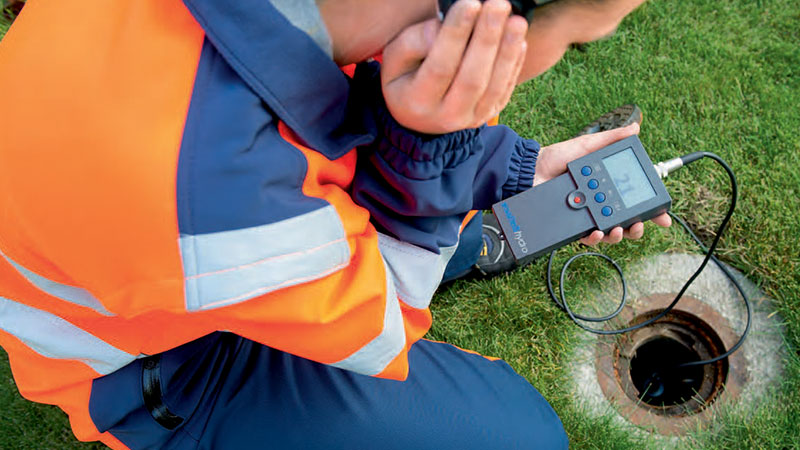Water Leak Detection: Just How to Determine and Fix Leaks Prior To They Cause Damages
Water Leak Detection: Just How to Determine and Fix Leaks Prior To They Cause Damages
Blog Article
Cutting-edge Solutions for Early Detection of Water Leaks in Structures and Infrastructure
As the integrity of structures and framework is vital, the challenge of early detection of water leaks has actually spurred innovative options that assure to reinvent the means we safeguard against prospective problems. From sophisticated leak discovery modern technologies to the implementation of IoT sensors for real-time surveillance, the landscape of leakage avoidance is evolving swiftly. Maker learning algorithms supply a glance into the future of leakage forecast, while thermal imaging presents a non-intrusive approach for identifying hidden leaks. Automated water flow evaluation systems are reshaping exactly how leakages are recognized and dealt with, leading the way for a proactive method to water leakage discovery. Each of these options holds the crucial to making sure the integrity and longevity of our built environment, triggering a shift in the direction of an extra lasting and efficient future.
Advanced Leakage Discovery Technologies
Advanced leak detection innovations, geared up with advanced sensing units and formulas, play a critical duty in promptly recognizing and pinpointing water leaks in different settings. Electro-magnetic sensors can recognize changes in electro-magnetic fields caused by water, providing yet one more layer of leak discovery ability.

IoT Sensors for Real-Time Surveillance
In the world of modern-day water leak detection, the integration of IoT sensing units for real-time tracking stands for a pivotal advancement in enhancing proactive leak discovery abilities. These sensors provide continual tracking of water systems, offering real-time data on water circulation prices, pressure variations, and temperature level adjustments. By leveraging IoT innovation, these sensors can identify even the smallest anomalies in water use patterns, making it possible for early recognition of potential leakages before they escalate right into major problems.
IoT sensing units transmit information to a central platform, where advanced formulas analyze the details and generate signals or alerts when irregularities are identified. This real-time surveillance capacity allows residential or commercial property proprietors or center managers to without delay attend to leakages, decreasing water damages, minimizing repair prices, and preserving water resources.
In addition, IoT sensing units can be integrated with structure administration systems, enabling for computerized responses to identified leakages, such as closing off water valves or activating pumps to reduce the influence of leakages. In general, the execution of IoT sensors for real-time tracking substantially enhances the performance and performance of water leakage detection in buildings and infrastructure.
Artificial Intelligence Algorithms for Leakage Prediction

One key advantage of making use of maker knowing for leakage prediction is its capacity to continuously find out and improve its precision in time. As more data is accumulated and fed right into the formula, it can improve its forecasts and adapt to transforming conditions, eventually increasing the dependability of leakage discovery systems.
Additionally, artificial intelligence formulas can assist in identifying refined indications of leakages that might go unnoticed by typical monitoring methods. water leak detection. By analyzing intricate data collections in real-time, these formulas can supply early warnings and notifies, enabling prompt treatment and preventive maintenance to mitigate prospective water damage and connected prices
Making Use Of Thermal Imaging for Leak Discovery
Thermal imaging technology uses an encouraging technique for finding water leakages in numerous systems and infrastructures. By utilizing infrared radiation and temperature level variations, thermal imaging cams can identify hidden leaks that are not easily noticeable to the naked eye.
One of the vital advantages of thermal imaging for leakage detection is its non-intrusive nature. Unlike conventional approaches that might need breaking into wall surfaces or floorings to locate leaks, thermal imaging permits non-destructive screening. This not just conserves time and lowers prices but additionally lessens interruption to the structure or infrastructure being examined. Furthermore, thermal imaging can quickly scan huge locations, giving a thorough introduction of prospective leakage resources in a prompt way. In general, the usage of thermal imaging technology enhances the performance and accuracy of water leak discovery, making it a beneficial tool for maintaining the stability of structures and infrastructures.
Automated Water Flow Analysis Systems
How can automatic water flow analysis systems reinvent the More Info discovery and administration of leakages in various systems and frameworks? Automated water flow analysis systems supply an aggressive approach to leakage discovery by continuously checking water circulation rates and patterns. By developing baseline data, these systems can swiftly identify discrepancies that might suggest a leakage, making it possible for timely treatment to stop extensive damages.
These systems use advanced formulas to assess real-time data and supply instant alerts when abnormalities are spotted, enabling speedy activity to be taken. Furthermore, automatic water circulation analysis systems can be incorporated with building management systems or IoT systems, enhancing overall effectiveness and allowing remote monitoring capacities.
In addition, the data accumulated by these systems can be used for anticipating upkeep purposes, aiding to determine possible powerlessness in the infrastructure prior to leakages happen. Generally, the application of automated water circulation analysis systems can substantially improve leakage detection and monitoring practices, ultimately leading to cost savings, minimized water wastefulness, and raised sustainability in structures and framework.

Conclusion
In verdict, the assimilation of innovative leak detection technologies, IoT sensors, equipment discovering algorithms, thermal imaging, and computerized water flow evaluation systems provides ingenious services for early discovery of water leaks in buildings and infrastructure. These technologies allow real-time monitoring, prediction of leaks, and efficient detection methods to avoid water damages and wastage. Executing these solutions can help in preserving the integrity and sustainability of water systems in various settings.
Report this page